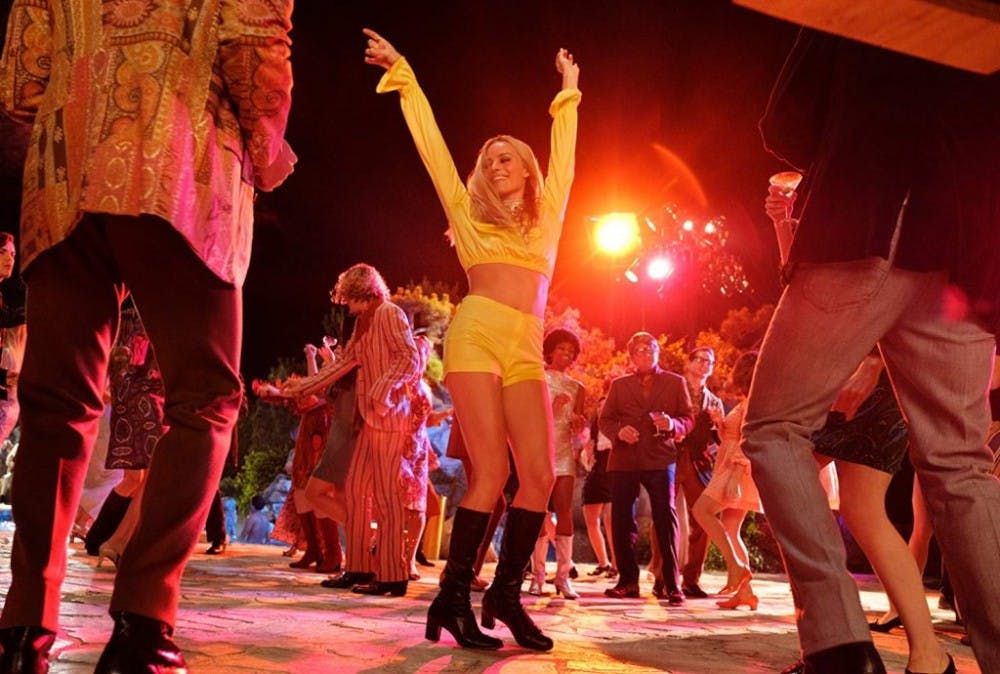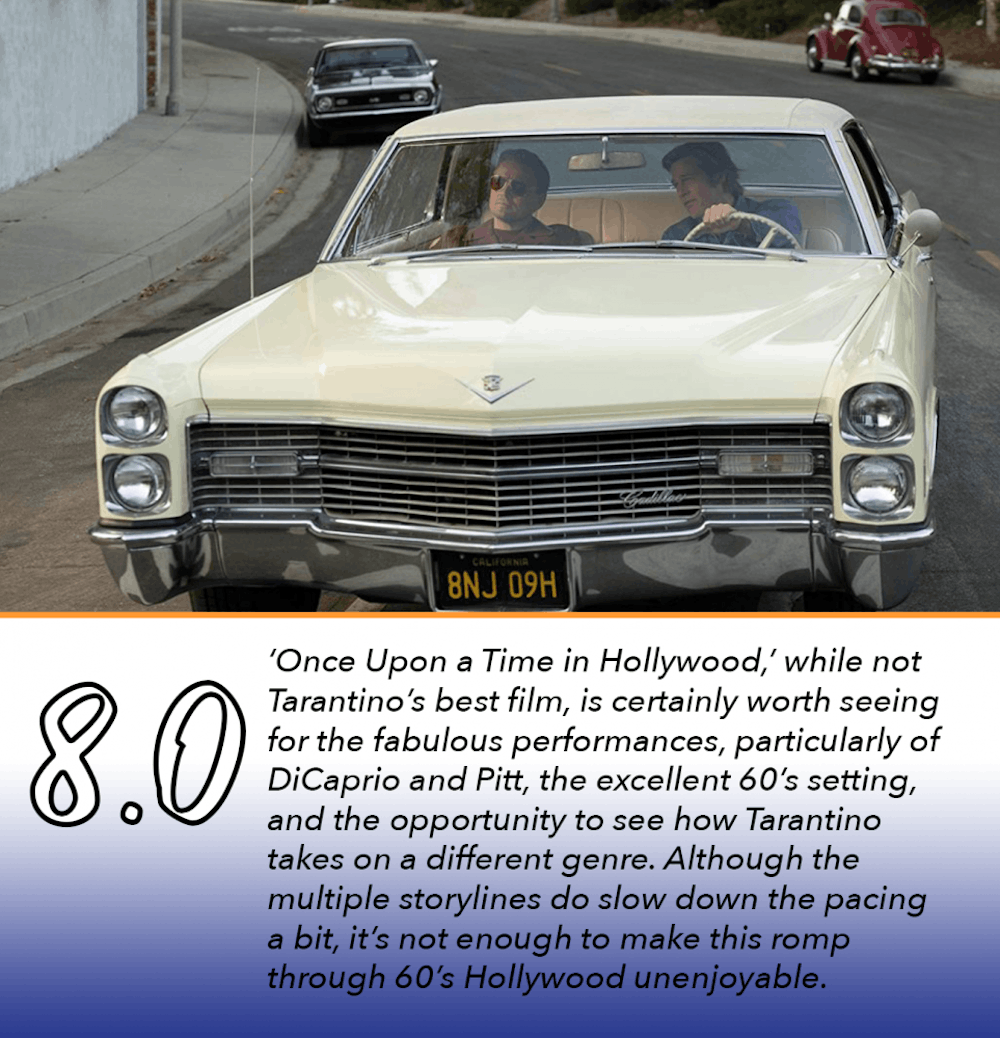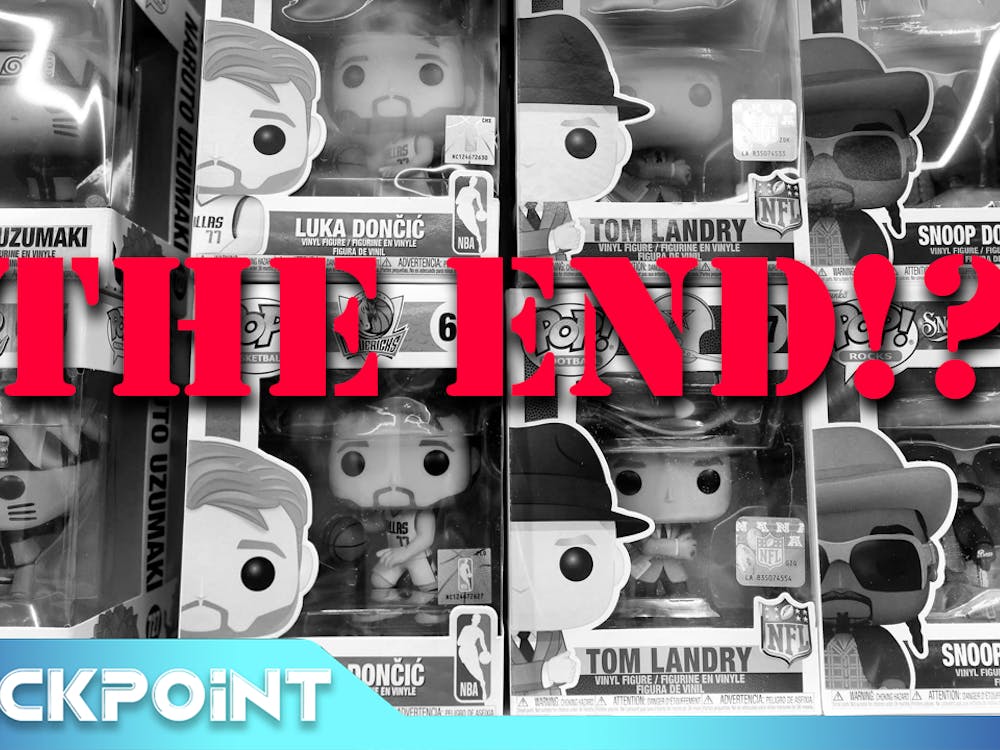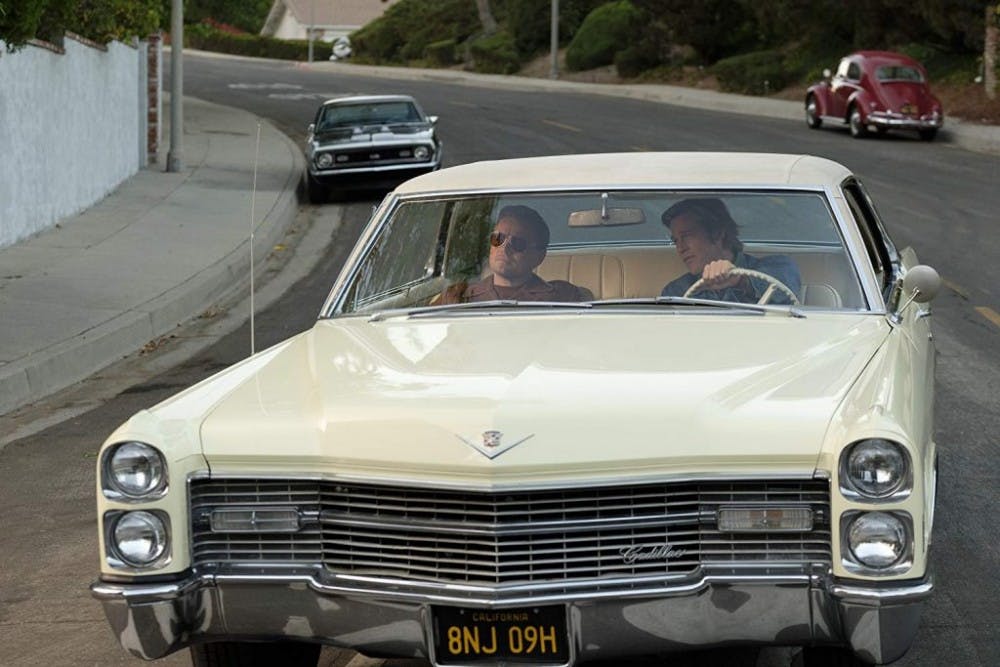As an avid Quentin Tarantino fan who hadn’t gotten anything new from him in about four years, I was naturally very excited when I saw trailers popping up for his new film, Once Upon a Time in Hollywood. The film, starring Leonardo DiCaprio and Brad Pitt as a 1960s Hollywood actor and stunt double duo, seemed to promise a very different, more intimately emotional type of movie than is typical of Tarantino. In that aspect, it delivered.
On the other hand, less than a day after its release, critics were heralding the film as “Tarantino’s masterpiece” and claiming it to be his best work to date. Having seen most of Tarantino’s films (including this one, of course), I can say with a good deal of certainty that at least to the typical Tarantino fan, this is not his best film. However, it’s by no means a bad film, and certainly worth seeing.
Tarantino in a new realm

Image from IMDb
What makes this film most interesting is seeing how Tarantino works with stepping away from the action and going into a more straightforward dramedy. He does a fantastic job of keeping his style and transitioning it to a new genre rather than trying to start over and erase his personal touch completely. Thus, many of the stylistic elements Tarantino has become known for are still present, most notably his habit of changing history (a la Inglorious Basterds or Django Unchained) and his gory violence (although, in this case, most of the violence is saved for the end of the film, which actually makes it all the more shocking, humorous, and ultimately satisfying).
However, one element that most of Tarantino’s films that felt blatantly diminished and even absent throughout much of this film is his masterfully stylized dialogue. Like most fans, I have come to expect dialogue that is naturalistic, yet rhythmic and witty. However, Once Upon a Time in Hollywood really did not meet my expectations for that; much of the dialogue didn’t really feel like Tarantino’s writing. There were, of course, a couple of scenes that proved to be exceptions (for example, in the very end when Rick Dalton is talking to Jay Sebring in his driveway), but on the whole, the dialogue was rather disappointing stylistically.
Pacing problems
One of the most notable issues with this film was definitely that the pacing seemed to drag, which is particularly detrimental for a film that already stands at run-time of two hours and 45 minutes. These issues with pacing seemed to stem from the fact that Tarantino was essentially presenting three separate storylines, and every time that one would start to pick up in pace, the film would switch to another and the pacing would slow right back down again. It was also hard to keep consistent with so much going on. Every time the storyline would switch, the viewer would have to consciously take a moment to switch their brain over, which naturally created a lull in the pacing every time it happened (which was a lot, because again, there were three separate storylines).
Welcome to the Sixties

Image from IMDb
While I haven’t been entirely complementary of Once Upon a Time in Hollywood thus far, I want to make it clear that this is not a bad movie by any means. One thing Tarantino really could not have done any better is to capture the feel of the Sixties and really transport the viewer there. The commercials and ads, from the Bounty Law opening to the post-credits Red Apple cigarette commercial perfectly fit the time period and put the audience in the mental space of old-school Hollywood. Additionally, portrayals of real historical Hollywood figures like Steven McQueen (Damian Lewis), Bruce Lee (Mike Moh), and of course, Sharon Tate (Margot Robbie) provide extra historical context for the viewer. Pair that with an absolutely perfect Sixties soundtrack that features recognizable tunes and less recognizable ones that still fit the period and atmosphere, and you’ve got a world that truly transports the viewer.
Of course, once the viewer is in the world of the film, it is the job of the actors to keep them there by delivering believable, true-to-life performances, and boy, do they ever. DiCaprio and Pitt (Cliff Booth) are phenomenal together, and their scenes were truly the glue that bound the multi-plotline story together. It’s a shame they didn’t have more screen time together, as their scenes were some of the most memorable and I constantly looked forward to the next time they’d be on screen together.
I want to especially highlight DiCaprio’s performance; although his character is not the most likable, he makes you truly feel the humanity and the struggle of what he was going through to the point of actively sympathizing with his character. Child actress Julia Butters (Trudi) absolutely nails her role and is just the right combination of adorable and opinionated to play perfectly off of DiCaprio.

Image from IMDb
I was a little disappointed in Margot Robbie’s performance, not because of anything she did, but because she was actually given so little to do. Although she was one of the principal characters, she had very little dialogue and mostly just smiled, danced, and sat around. I can understand that because she was portraying a historical figure, the filmmakers probably wanted to be careful with how they portrayed her, but at the same time, if you feel you can’t properly represent someone, you probably should not make them a lead character in your film.
Overall, this was a quality film from Tarantino and I am glad to see him branching out. Sure, the interwovenness of plotlines was weak at times, and there were some obvious flaws, but this was Tarantino’s love letter to Hollywood and to the industry, and it serves that purpose and is beautiful in the specific context of said purpose. However, that being said, if you want the Tarantino experience, you’re much better off going with Pulp Fiction or one of the Kill Bill movies.

Images: IMDb
Featured Image: IMDb
For more entertainment related content, visit us at Byte BSU!



















